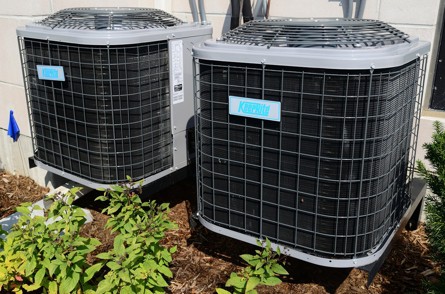A heat pump is an innovative heating system for your home that you can also use to maintain the temperature of your house to your liking. However, the frequency and duration of a heat pump’s daily operation can vary depending on a number of variables.
That’s why many often get confused about how long a heat pump should cycle for long-term effects during the day. For this, you will have to comprehend the cycles and functions of the heat pump. Knowing this can make your heat pump last longer without a breakdown.
So, make sure you read till the end of the article to master the art of heat pump operation and to know how long it should run a day. Not only will it help you achieve cozy temperatures inside your house, but it will also help you save a lot on your energy bill.
How does a heat pump work?
A heat pump transfers heat from outside sources into your home or vice versa. That is, whenever there is a considerable temperature difference, a heat pump will work to adjust your house temperature suitably.
For example, a heat pump will push the warm air from the outdoors into your house and distribute it throughout to warm your house up during the winter. The system forces warm air into the house while pushing cold air outside. Thus, the heat pump delivers surplus energy from the outer environment to your home as cold or hot air to maintain pleasant temperatures.
How long should a heat pump run a day?
Ideally, a heat pump can run two or three cycles every hour, with each cycle lasting about 10-20 minutes. Each cycle is capable enough to compensate for the ideal temperature requirement that arises due to the discrepancy between the temperature requirement inside the house and the actual outside temperature.
A heat pump typically operates at a constant temperature all through the day. Once you are at ease in your house, the heat pump will cycle on and off several times during the day to maintain the set temperature against any external temperature fluctuations.
The duration for how long a heat pump runs varies mainly due to the external weather conditions and the temperature preset of the system. But during the winter, the heat pump frequently runs nonstop, especially when the temperature outside is below freezing (32 degrees Fahrenheit).
The heat pump can run continuously to maintain the warmer temperatures inside your house to keep it warm for more than 40 hours.
Is running a heat pump continuously normal?
As stated earlier, it is absolutely normal for the heat pump to operate constantly if the temperature outside is extremely cold. This is because the heat required to keep your house warm becomes nearly equal to the amount of heat a heat pump generates in a given duration.
Some common problems that prevent a heat pump from operating non-stop can be as under:-
-
Your thermostat setting is not correct, meaning that you set it way too high in the winter or extremely low in the summer.
-
The air filters need regular cleaning/ replacement since they may collect dust and debris that clog the system.
-
The condensate pump is the spine of the entire system. Thus, it has to be in optimal shape to keep the system running smoothly. However, a malfunctioning condensate pump can cause several problems, preventing it from running continuously.
What to look for in a malfunctioning heat pump?
Your heat pump can go through several daily cycles to keep your house temperature at the preset levels. Nevertheless, the heat pump may not be functioning correctly if you notice any of the following warning signs:
-
The blower will stop blowing air when there is a problem with the heat pump. If your heat pump blower stops operating, the heat pump’s useful life may have come to an end. It might also represent that the limit button should be replaced. It might even be a reference to overloading or short-circuiting in the heat pump.
-
Heat pump short cycles, i.e., the pump turning on for very short durations before turning off several times a day, can also be a warning sign. It may demonstrate that the compressor is malfunctioning and not maintaining the desired temperature.
-
A heat pump leak may also be a sign of more severe problems. Your heat pump will overrun and blow hot air in the summer if there are refrigerant leaks in the system, which will prevent it from working properly.
-
A malfunctioning heat pump fan is also a warning sign that your heat pump is not running properly. With a faulty or malfunctioning fan, your heat pump will blow hot air even when your temperature is lower.
-
Another red flag is when your system freezes up in the winter. The ideal place to look for an ice building is close to the unit. The reversing valve might not be working due to the ice formation. It also indicates that the refrigerant is leaking.
-
Another warning sign is that your system makes strange noises. It might be an indication that the fan motor should be repaired or replaced. Also, if there are too many vibrations, it could hint at loosened parts that have to be overhauled.
Endnote
A heat pump gives your house the optimal temperature to maintain a pleasant ambiance inside. However, it has to be on the proper settings and run the requisite cycles to achieve the desired outcome. With a little bit of attention and observation, you can make your heat pump deliver the desired temperature in the very long run.
All you have to do is keep an eye on the cycles of the system. If the heat pump keeps running longer than usual or in short cycles, it may require repair. Nevertheless, if your heat pump acts up or you need help figuring out what’s wrong with your system, it is always a wiser idea to call an expert.





